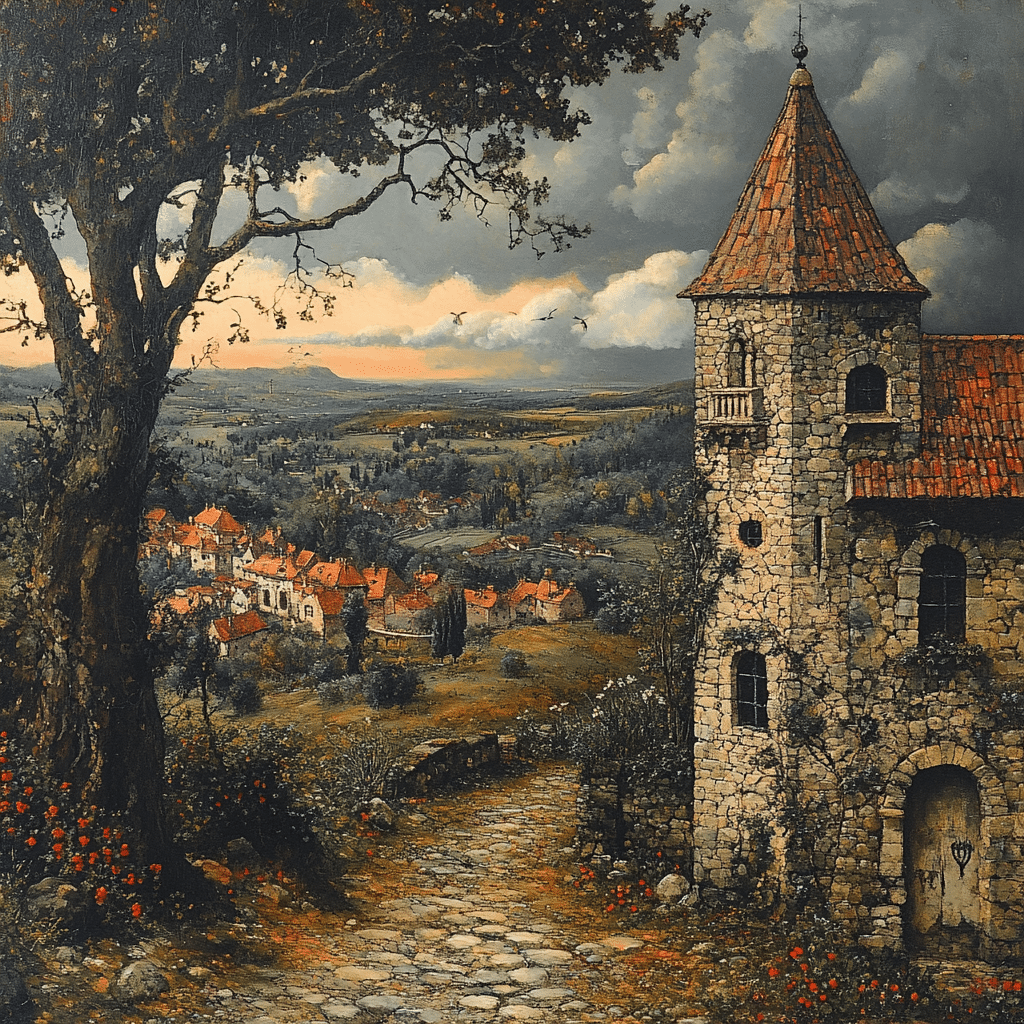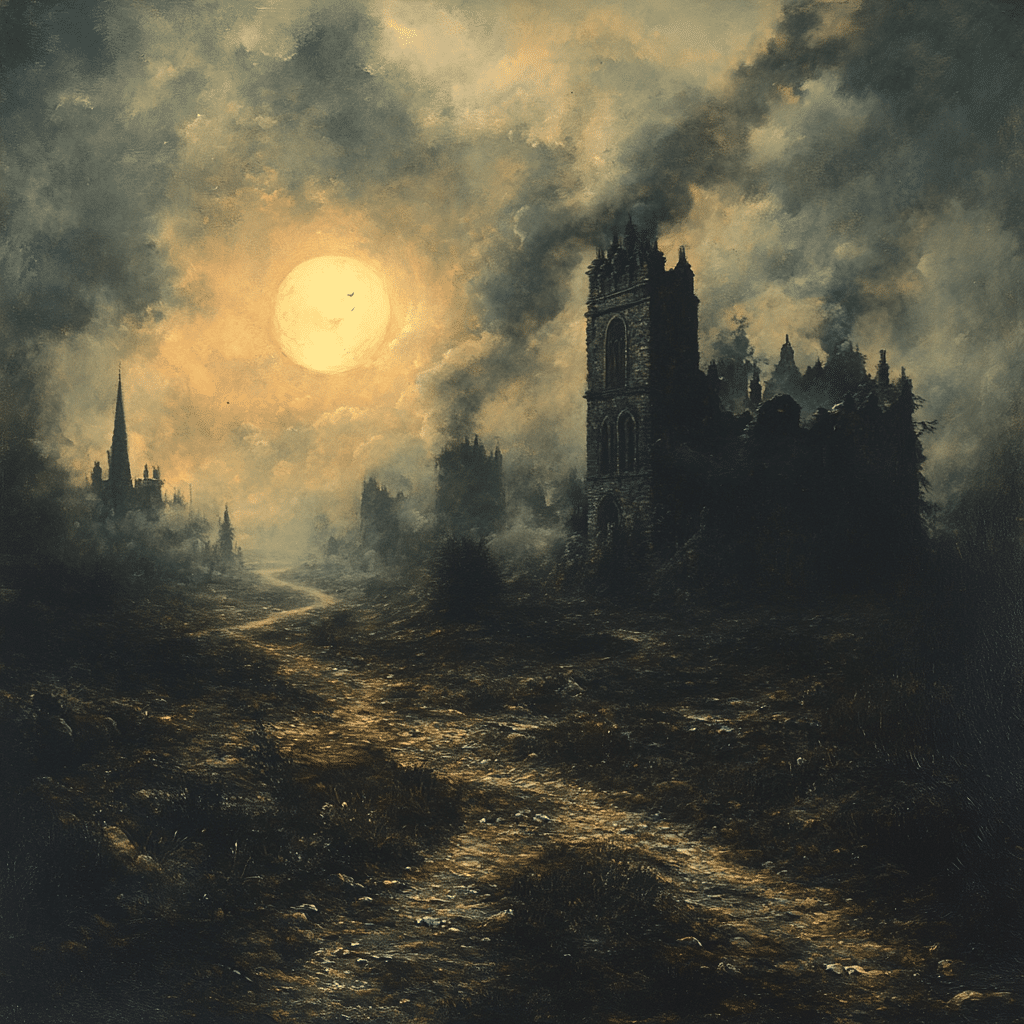The small village of Dunchurch, renowned as ‘the Gunpowder Plot village’, holds a pivotal place in British history. Nestled in Warwickshire, England, it was here, on the 5th of November 1605, that the Gunpowder Plot conspirators met at the Old Red Lion Inn, awaiting news of Guy Fawkes’ attempt to blow up Parliament. As we unveil the depths of Dunchurch’s historical relevance, we’ll journey through time, exploring clandestine gatherings, historic landmarks, and dramatic escapes.
The Role of Dunchurch: A Strategic Meeting Point
Situated conveniently close to major cities such as Coventry and Birmingham, Dunchurch was the perfect clandestine meeting spot for the Gunpowder Plot conspirators. On that fateful night in November, as Guy Fawkes and his fellow plotters prepared to ignite their barrels of gunpowder beneath the House of Lords, several members of the conspiracy anxiously awaited news at the Lion Inn in Dunchurch. This wasn’t by accident — the village’s secluded environment and strategic location made it an ideal hideout for the conspirators.
The tranquil facade of Dunchurch hides its dramatic history. Today, the village is known for its peaceful atmosphere, lovely eateries, and a few quiet drinks in the evening. Yet, the depths of its historical significance as a nerve center for one of England’s most audacious conspiracies cannot be overstated.

Discovering the Forest Recreation Ground’s Hidden History
While we often associate it with modern leisure activities and local events, the Forest Recreation Ground in Nottingham played a critical part in the aftermath of the Gunpowder Plot. After the plot was foiled, conspirators such as Robert Catesby and Thomas Percy sought refuge through various secret routes. They often hid in dense wooded areas like the Forest Recreation Ground, using the cover of the trees to evade capture.
Historically, these wooded terrains provided a labyrinthine cover that frustrated the authorities’ efforts to catch the fleeing plotters. It’s a stark contrast to how we think about these spaces today. While taking a leisurely stroll or enjoying a public event, it’s hard to imagine these grounds as scenes of desperate hiding and frantic escape.
| Aspect | Information |
| Location | Dunchurch, Warwickshire, England |
| Historical Significance | Known as “The Gunpowder Plot Village”; conspirators met at the Old Red Lion Inn on November 5, 1605. |
| Landmarks | Statue of Lord John Douglas-Montagu-Scott in the village centre. |
| Educational Facilities | Reputation for strong primary schools; option for grammar system at secondary level. |
| Local Amenities | Various restaurants and pubs, making it a pleasant place for an evening out. |
| Community Atmosphere | Known for a peaceful, community-centric vibe without being too overcrowded or troublesome. |
| Accessibility | Located near major roads and transport links, making it easily accessible from surrounding areas. |
| Recreation | Offers beautiful scenery and plenty of walking trails. |
| Cultural Events | Celebrations for Guy Fawkes Night due to its historical connection to the Gunpowder Plot. |
| Demographics | Small village with a close-knit community. |
| Local Economy | Composed of small businesses, restaurants, and education facilities. |
| Tourism | Draws visitors interested in its historical significance and serene environment. |
Delving into SE14: An Intersection of Historical Narratives
Moving away from the rural to the urban, SE14 — encompassing parts of New Cross and Deptford in London — offers another layer of historical insight into the period. Although far from Dunchurch, SE14’s significance lies in its rich socio-political history during the Jacobean era, a period ripe with rebellion and discontent.
Notably, figures like Sir Thomas Wyatt and other historical rebel groups frequented this district. This area exemplifies how urban centers were breeding grounds for plotters and conspirators who, much like the Gunpowder Plot conspirators, sought to challenge the status quo. The narrative of SE14’s connection to the broader landscape of rebellion provides invaluable perspectives on the turbulent times.

Connections to Verwood: A Quiet Part of the Plot
Verwood in Dorset might seem an unlikely connection, yet it holds its own story of intrigue. Known for being a safe haven for recusant Catholics, Verwood played an indirect but significant role in the Gunpowder Plot. The town’s proximity to other Catholic strongholds made it ideal for plotting and pseudo-political activities.
Recusant Catholics, who refused to attend Anglican services, often faced persecution. Towns like Verwood offered sanctuary and became hotspots for conspiracy against the monarchy. This backdrop underlines the widespread nature of dissent and the many rural enclaves that nurtured these revolutionary activities beyond the obvious epicenters like London and Dunchurch.
West Thurrock and the Broader Conspiracy Network
West Thurrock, now known for industrial establishments such as the Procter & Gamble plant, was once an integral part of the Gunpowder Plot’s extensive network. In the early 17th century, conspirators used a series of safe houses and secret passages in areas like West Thurrock. They leveraged the seclusion along the River Thames to move materials and messages without detection.
The plotters’ reliance on such networks is emblematic of the elaborate measures they took to avoid capture. The clandestine use of these locations demonstrates their ingenuity and the extensive network that underpinned their conspiratorial efforts.
The Long-lasting Impact of Dunchurch and the Gunpowder Plot
Dunchurch’s role in the Gunpowder Plot provides valuable insights into the socio-political fabric of 17th-century England. The quaint village, with its serene landscape and historic statue of Lord John Douglas-Montagu-Scott, belies its turbulent past. Today, tourists flock to the Lion Inn and other historical sites, grounding the magnitude of these conspiracies in a tangible reality.
Historians regard Dunchurch as not just another village but a significant chapter in Britain’s narrative. Its legacy as a hub of political dissent continues to resonate, reminding us of the dramatic events that once unfolded there.
A Modern Perspective: Lessons from Dunchurch’s Past
The fascination with Dunchurch and the Gunpowder Plot endures, captivating historians and enthusiasts. Examining these historical events through a contemporary lens offers valuable lessons about political dissent and the struggle for power. The enduring relevance of these narratives is evident as we reflect on how Dunchurch, Forest Recreation Ground, SE14, Verwood, and West Thurrock all played roles in a significant historical moment.
These locations are not mere footnotes; they are critical chapters in the stories of resistance and revolution that continue to shape our understanding of history.
Unveiling New Dimensions of Historical Insight
Peeling back the layers of history embedded in Dunchurch and its connections to the Gunpowder Plot reveals a fascinating web of secrecy, conspiracy, and resilience. From rural Warwickshire to the urban sprawl of SE14, the narrative spans an extraordinary interplay of geography and ambition.
As we deepen our understanding of these historical events, we honor the legacy of those charged moments and embrace their continuing relevance. By doing so, we enrich our appreciation of history, uncovering the intricate details that shape our collective understanding of past and present revolutionary movements.
In conclusion, Dunchurch and its associated sites offer unique insights into the socio-political dynamics of the early 17th century. The village’s tranquil charm today contrasts sharply with its explosive past, making it a fascinating subject for historians and casual visitors alike. Whether intrigued by the dramatic escapades of the Gunpowder Plot conspirators or enjoying a peaceful evening at the local inn, Dunchurch remains a beacon of historical significance.
For those curious about the broader narrative and ongoing inquiries into such historical dynamics, sites like found news at The Conservative Today provide a continuous feed of investigative insights. To see how similar modern strategic considerations play out, one might look at detailed analyses like those on the Ravens rb depth chart or delve into intricate storytelling within universally appealing genres, such as the fire force Manga.
If you wish to explore the ongoing cultural intrigue and historical narratives prevalent even in today’s pop culture, references like Nemu Bleach or A Case Of You Lyrics offer a modern connection to the age-old themes of loyalty and rebellion. Ultimately, understanding Dunchurch and its role in the Gunpowder Plot not only enriches our grasp of history but also enhances our perspective on the continuous narrative of human ambition, resistance, and power dynamics.
Dunchurch Gunpowder Plot History Revealed
Dunchurch, a small village with a rich history, has secrets that are truly fascinating. Nestled in the heart of England, this quaint locale played a significant role in one of history’s most infamous plots. You might not immediately connect Dunchurch with intrigue, but the Gunpowder Plot of 1605 brings a surprising twist. Imagine, a sleepy village tied to a plot aiming to overthrow the monarchy!
The Intriguing Ties
Dunchurch was unwittingly a part of Guy Fawkes’ infamous scheme. Here, conspirators stayed at the Lion Inn, now known as Guy Fawkes House, as they waited for news of the plot’s success. Much like fans eagerly awaiting the much-anticipated match of Tyson Fury Vs Usyk, conspirators were on the edge of their seats. The inn’s transformation into a historical site makes it a point of interest for history buffs and casual visitors alike.
Little-Known Trivia
There’s an abundance of quirky trivia about Dunchurch that you might find intriguing. Did you know that Dunchurch played a significant role in England’s coaching days? The highways running through the village became busy routes for stagecoaches during the 18th and 19th centuries. As crucial rest stops for those long journeys, these routes were akin to today’s main highways. It wasn’t just for travel; music too passed by, echoing the passion found in the lyrics of “I Would Do Anything for Love,” a song that captures the essence of steadfast dedication.
Life in Modern Dunchurch
Current Dunchurch maintains a balance between its historical roots and modern-day life. It’s a place where you’ll find charming houses, quiet streets, and stately buildings from a bygone era. Navigating the real estate market here might seem tricky, but determining how much to afford for rent can guide those interested in moving. The village’s blend of old and new creates a unique atmosphere that attracts those who enjoy a mix of tranquility and history.
In summary, Dunchurch is much more than meets the eye. From its role in the Gunpowder Plot to its vibrant coaching history, this village keeps history alive with every stone and street corner. So, next time you find yourself in this charming village, remember—it’s not just any place; it’s Dunchurch!

What is Dunchurch famous for?
Dunchurch is famous for its historical connection to the Gunpowder Plot of 1605. The conspirators met at the Old Red Lion Inn to await news of Guy Fawkes’ attempt to blow up Parliament.
Is Dunchurch a nice place to live?
Dunchurch is a lovely place to live. It’s peaceful and ideal for evening outings with good food and drinks without the chaos. It has a great reputation, especially for its primary schools, and there’s also the option for grammar schools for secondary education.
Who is the statue in Dunchurch rugby?
The statue in the centre of Dunchurch is of Lord John Douglas-Montagu-Scott, a 19th-century landlord, Scottish M.P., and younger brother of the 5th Duke of Buccleuch.
How many people live in Dunchurch?
Dunchurch has a population of around 5,400 people.
Why is the town called rugby?
Rugby is called so because of the old English name ‘Rocheberie,’ which means “fortified place” or “place by the rocks.”
Where is Guy Fawkes’ house?
Guy Fawkes’ house is not in Dunchurch. He is more famously associated with York and London.
What areas to avoid in rugby Warwickshire?
There aren’t any particular areas in Rugby, Warwickshire that are widely considered very problematic, but like any town, it’s always good to research and perhaps avoid the less desirable spots.
How safe is Rugby in the UK?
Rugby is generally considered safe with the usual precautions needed for any town. It’s a friendly place with a community vibe.
What is it like living in Rugby?
Living in Rugby is pretty nice. It’s got good schools, decent amenities, and strong transport links. It’s a mix of modern living with a bit of that old-town charm.
Who is the black teacher statue in Wales?
The black teacher statue in Wales commemorates Betty Campbell, the first black headteacher in Wales.
Who is the statue of outside the BBC?
The statue outside the BBC is of George Orwell.
Who is the statue in the middle of Leicester Square?
The statue in the middle of Leicester Square is of William Shakespeare.
What county is Dunchurch in?
Dunchurch is in Warwickshire.
How many citizens are in Brighton?
Brighton has around 290,000 citizens.
What is the population of rugby city?
The city of Rugby has a population of about 77,000.
What is rugby school famous for?
Rugby School is famous as the birthplace of the sport of rugby and for its academic achievements.
What is rugby England famous for?
Rugby, England, is renowned globally for being the birthplace of rugby football.
What sport is Twickenham famous for?
Twickenham is famous for rugby union, and it’s home to Twickenham Stadium, the largest rugby-dedicated venue in the world.
What is the history of the Cawston House?
Cawston House is a historic building with roots going back to the 17th century, often admired for its architecture and historical significance.



